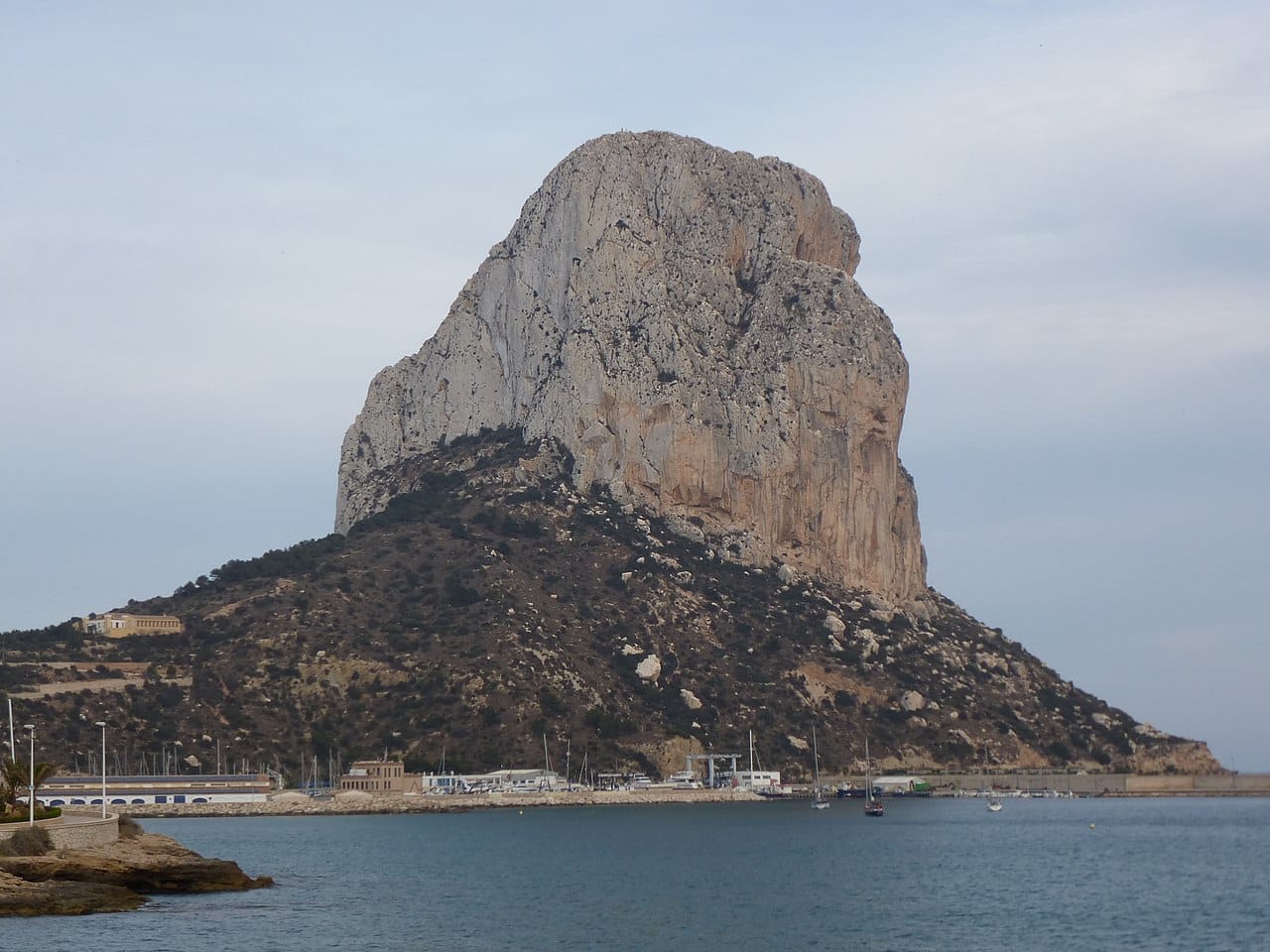
We are going to show you seven magical corners of the province of Alicante for you to visit and enjoy. Among the places that we propose, you have wonderful scenery of the privileged Levantine nature, but also beautiful towns full of charm.
Also, you will find natural monuments that, like fearsome colossi, protect the coastline. Some of these sites have even been listed as World Heritage. But, above all, it is certain that all of them will fascinate and impress you with their beauty. As there are many, we have had to make a selection. Therefore, below, we present our seven magical corners of the province of Alicante.
Novelda
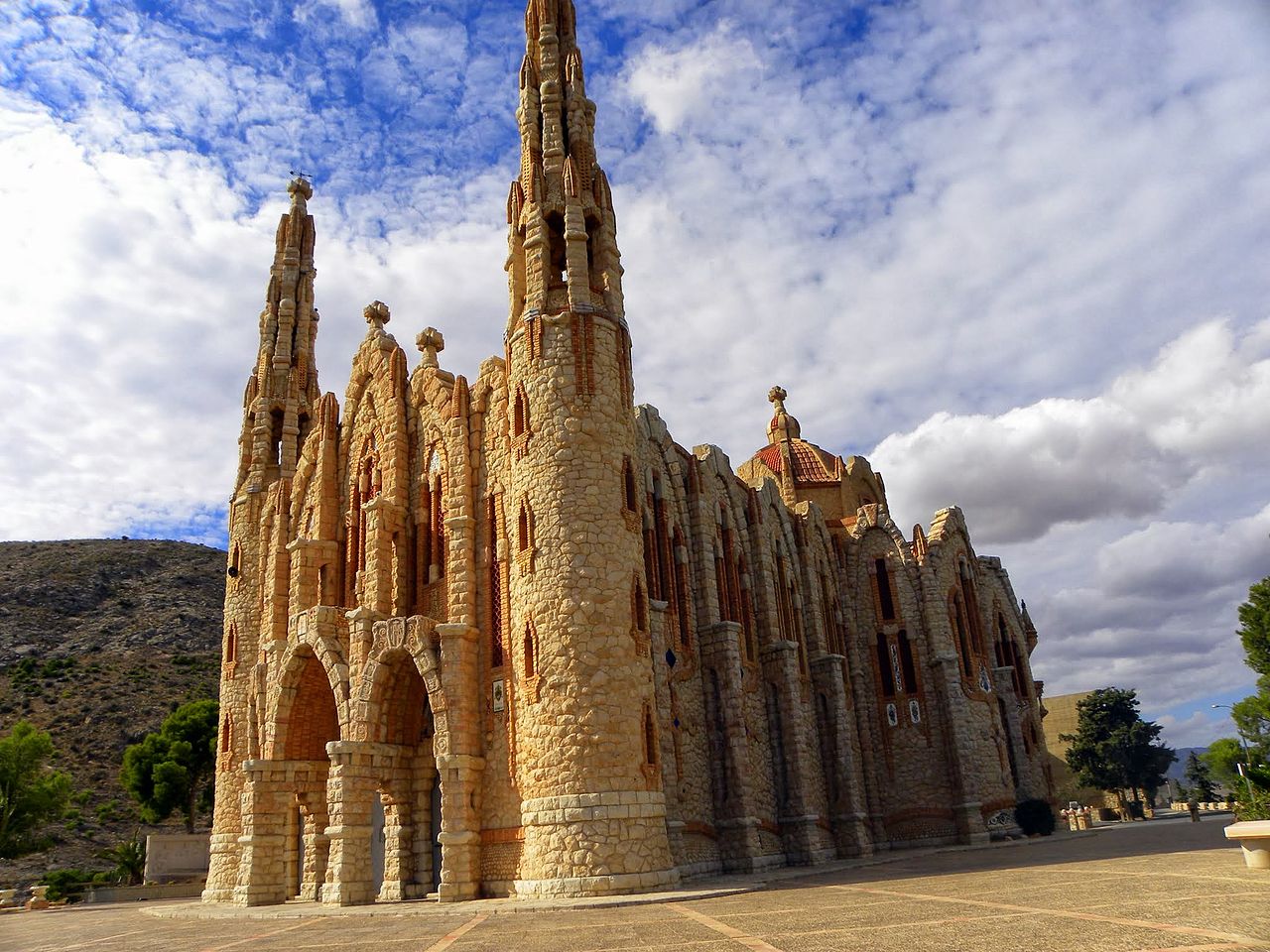
Sanctuary of Santa María Magdalena in Novelda
There are many beautiful towns in Alicante that could be part of our proposal. For example, the old town of Altea, with its white houses and its spectacular church of Nuestra Señora del Consuelo, or also Guadalest, with its castle and its spectacular natural environment.
However, we have chosen Novelda, a beautiful town of just over twenty thousand inhabitants that belongs to the Medio Vinalopó region. In its case, it stands out for its impressive monumental heritage. He dominates her castle of the Mola, which dates back to the Almohad period. No less beautiful are the churches of San Pedro and San Roque, both baroque, and the Town Hall.
But, if Novelda stands out for something, it is for its modernist heritage. Its great symbol is Sanctuary of Saint Mary Magdalene, which is inspired by the Holy Family of Gaudí. It is also completed by the buildings of the Casino, Casa Mira, the current Gómez Tortosa Cultural Center and Casa Navarro, the latter an authentic building-museum of this architectural style that triumphed at the beginning of the XNUMXth century.
The Rock of Ifach
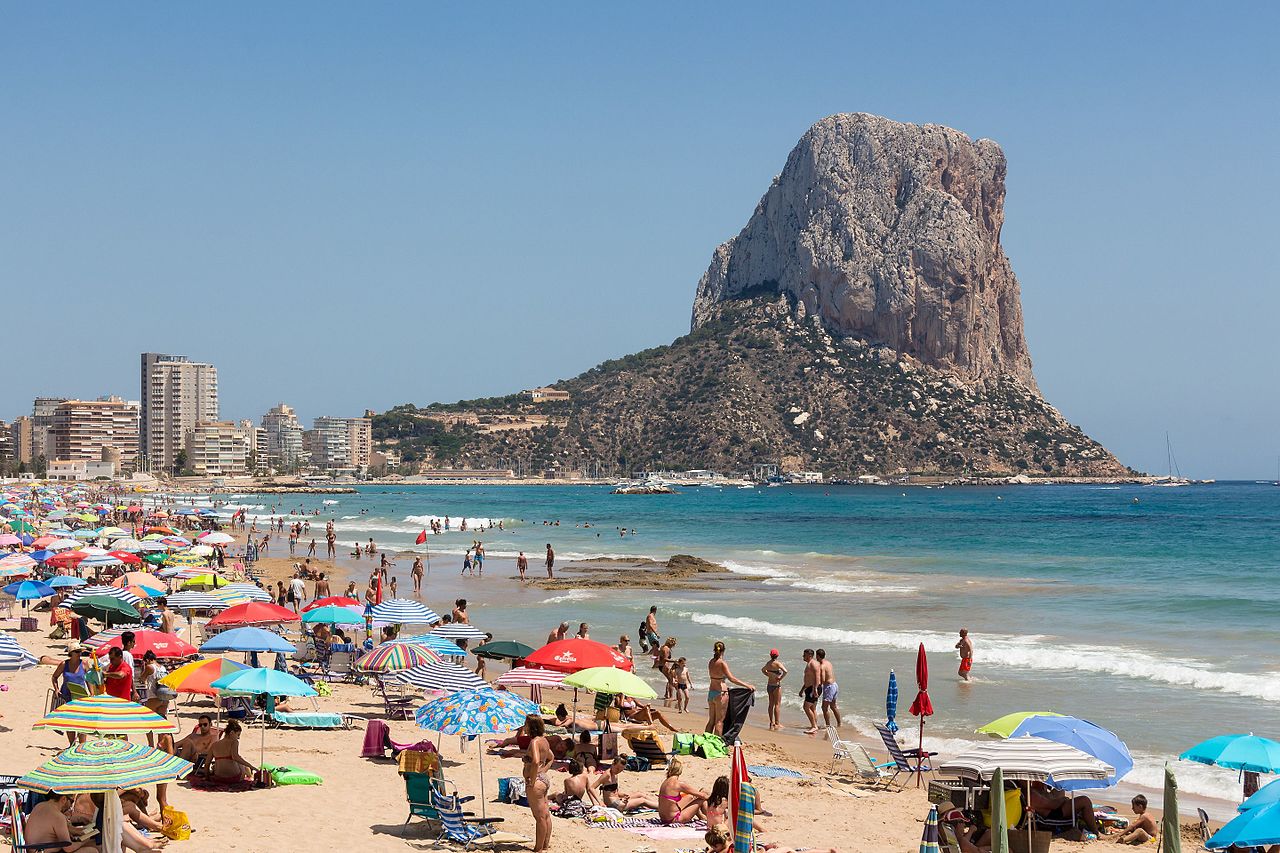
The imposing Peñón de Ifach seen from the beach
We change registration to show you another of the seven magical corners of the province of Alicante. In this case, we move to Calpe to tell you about the majestic Peñón de Ifach, which protects it from one end of its coast. forms a parque natural of more than fifty hectares in which peculiar fauna and flora abound. Regarding the latter, there are native species such as the Ifach silene, while, regarding the former, you can see gannets, shags and peregrine falcons.
As with other large stone colossi, the rock has a nice legend. This one says that it was formed after the fight between two giants, one good and the other evil. After the fight, the latter fled towards the sea and was petrified giving rise to the mountain.
You can visit this enormous calcareous mass almost three hundred and fifty meters high by taking a hiking route. If you do it and the weather is clear, from the top you can see the Cape Santa Pola and even the Balearic island of Formentera. However, it is better that you book your visit, since access is limited to 300 people a day.
Also, on your tour of the rock, you will see the remains of the old Iberian town, dated around the XNUMXrd century BC, and you will find viewpoints such as those of Poniente or Carabineros. You will even be able to go to the other side of the mountain through a fifty meter tunnel.
Pink lagoon of Torrevieja
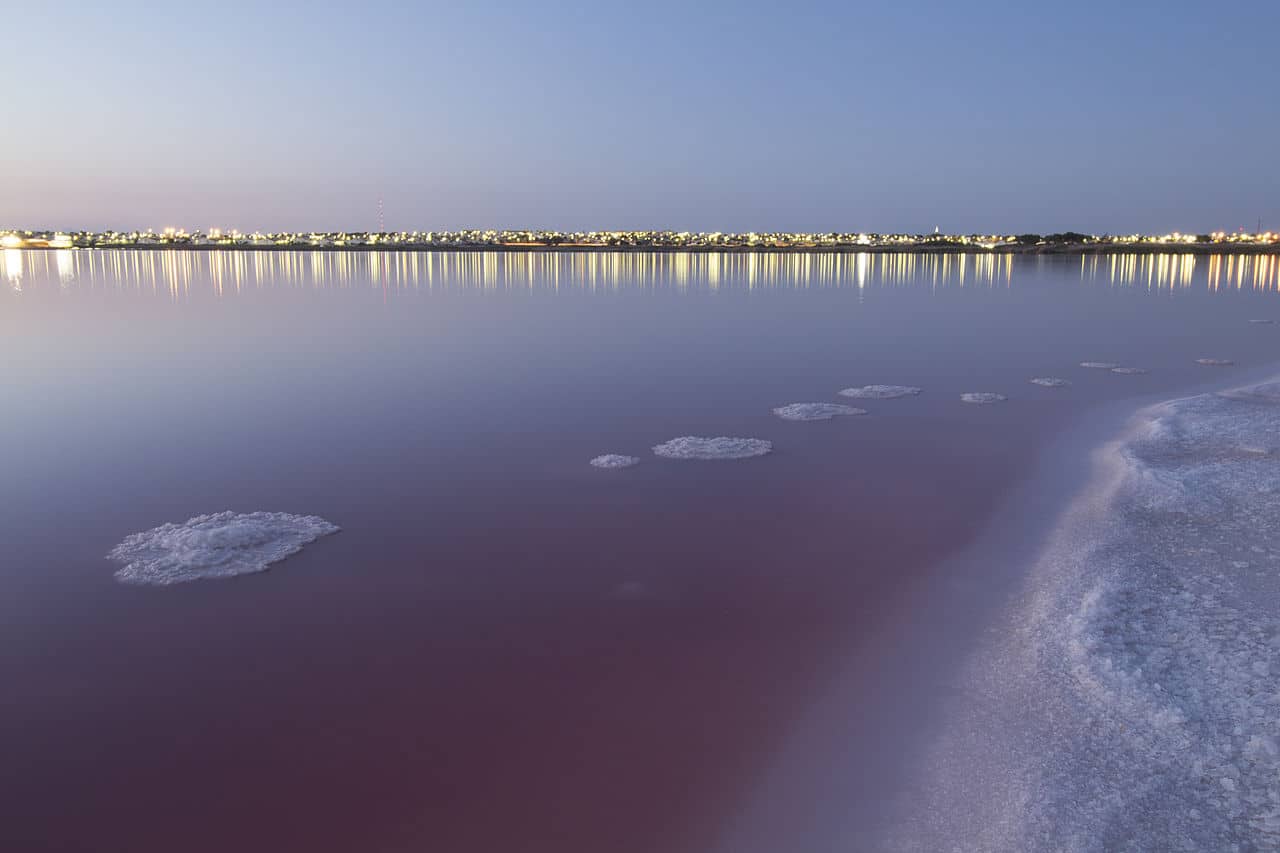
The Laguna Salada de Torrevieja, with its peculiar pink color
Torrevieja is a beautiful villa located in the Vega Baja del Segura region, almost bordering on the province of Murcia. It has an extensive monumental heritage, with neoclassical churches such as the Immaculate Conception, watchtowers such as the Moro or modernist buildings such as the Casino. But, above all, it has a privileged environment.
Part of this is formed by La Mata and Torrevieja Lagoons Natural Park. It is a wonderful wetland of almost four thousand hectares in which lagoons, salt marshes and boulevards abound. But there is still another magnificent surprise in store for you. We talk to you about the Lsalty lagoon, which will impact you for the Pink color of its waters.
This is due to a bacterium that releases pinkish pigments when it encounters high concentrations of salt, as is the case. If, in addition, you visit it at sunset, you will find one of the most beautiful images you can find on the Levantine coast.
The Balcony of the Mediterranean
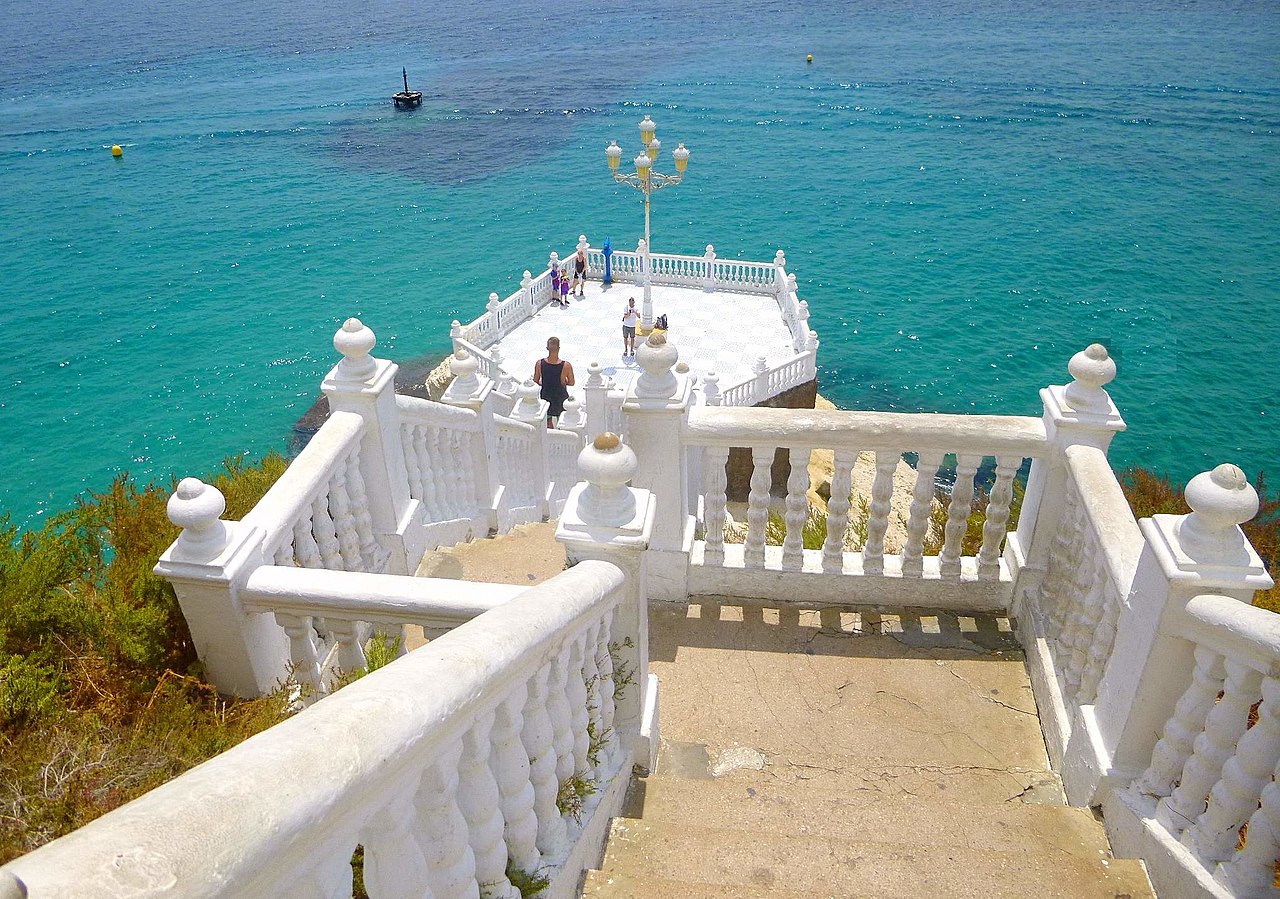
The Balcony of the Mediterranean, one of the magical corners of the province of Alicante
We can tell you little about Benidorm that has not already been written. Known as "the New York of the Mediterranean", it is one of the most important tourist places in Europe. It receives millions of visitors every year and has some emblematic places. Buildings like the Intempo or the Gran Hotel Bali are symbols of its strength.
But there is another point in the city that has also become one of its emblems. Its about Mediterranean balcony. It is also known as the Castle viewpoint because, between the XNUMXth and XNUMXth centuries, there was a fortress on the site to protect the coast from pirate attacks. This hill is the canfali and on it the balcony was built. It consists of some white stairs that lead to the esplanade of the viewpoint protected with an equally white balustrade.
But the most important thing is that it offers you wonderful views of the Mediterranean and the skyline city, with its spectacular skyscrapers. We recommend that you also visit it at night to see the latter illuminated. Also, next to the balcony you have the Castle plaza, with a monument protected by four cannons that recalls the warlike past of the place.
Barrio de Santa Cruz
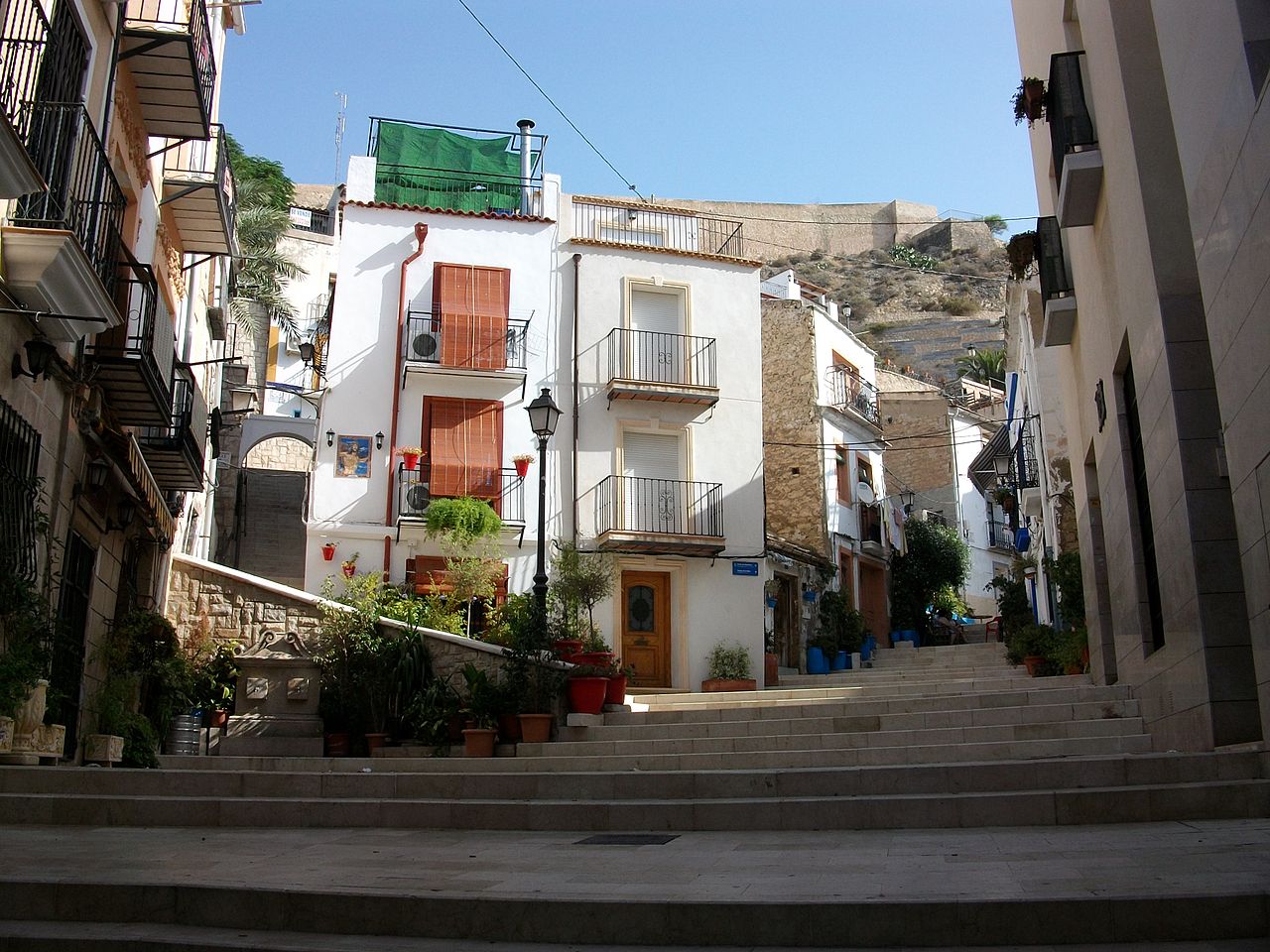
Santa Cruz neighborhood, in Alicante
We now travel to the capital to show you another of the seven magical corners of the province of Alicante. We could choose places as photogenic and beautiful as the famous Postiguet beach, with its promenade, or the no less beautiful sandy area of San Juan. But we have chosen to talk to you about a very different place.
This is the Santa Cruz neighborhood or old town Alicante. It began to be inhabited in the Middle Ages and its streets extend along the slopes of the mount Benacantil, Where is he castle of Santa Barbara. In turn, this was built on an old Arab fortress around which the neighborhood was created.
You can see it as you head to visit the castle. It is very pretty, with its narrow cobbled streets, its white houses adorned with flowers and hermitages such as those of San Roque and Santa Cruz. If you can, we advise you to see him when he celebrates the May Crosses, because all of it is adorned with carnations.
The palm grove of Elche
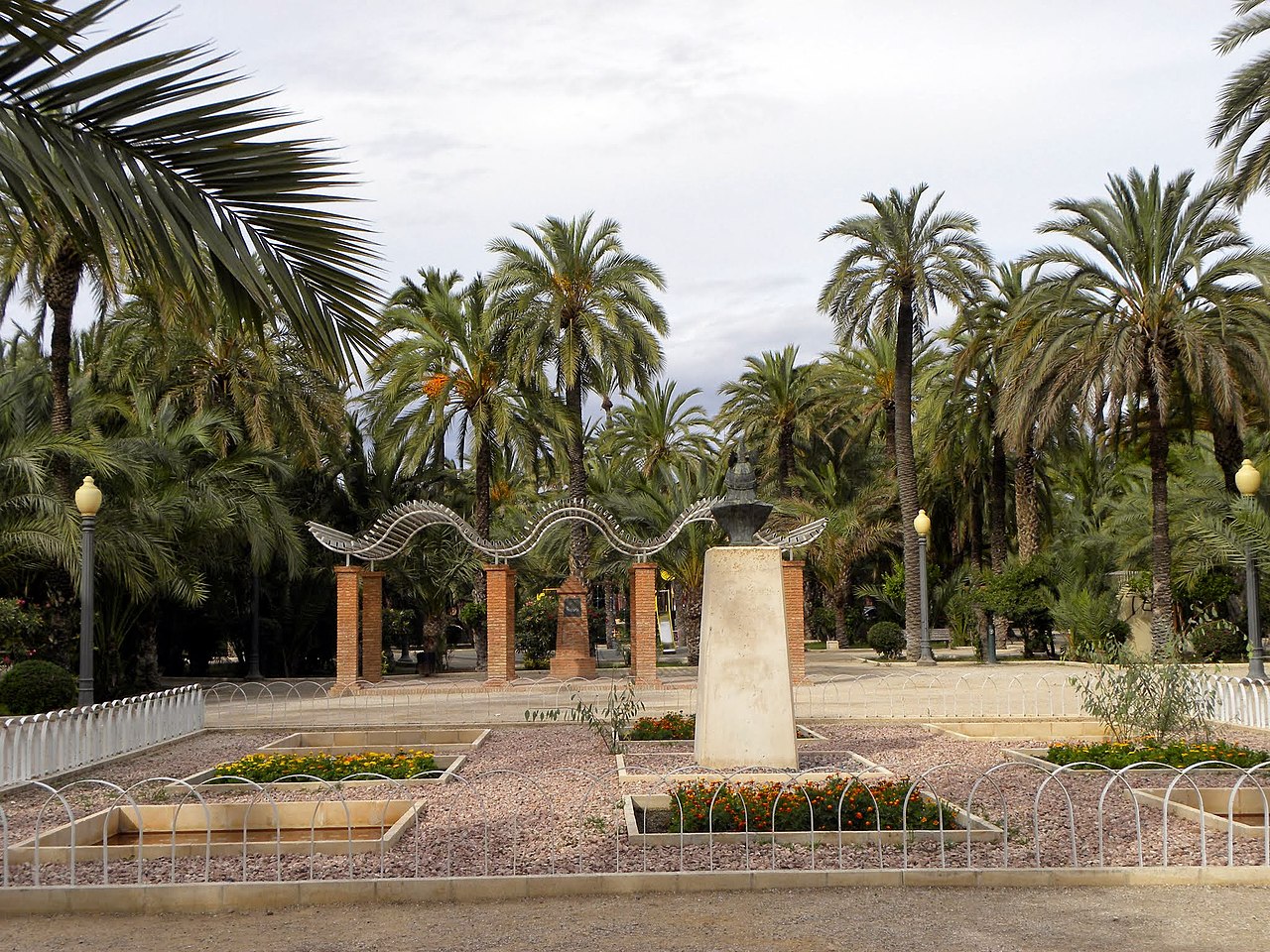
View of the Palmeral de Elche, which is a World Heritage Site
Along with Alicante, the other large city in the Levantine province is Elche, with its more than two hundred thousand inhabitants, which is the capital of the Bajo Vinalopo. In it you have precious monuments such as the Basilica of Santa María, a jewel of the Spanish Baroque; he Altamira palace, dated in the fifteenth century, or the Calahorra tower, remains of an Almohad fortification.
However, we do not want to talk to you about the artistic heritage of Elche, but about the botanical one. Specifically, of his Pgrove, which has been declared Heritage and that it is the largest in Europe, with its five hundred hectares and between two hundred and three hundred thousand specimens. It is believed that it was the Phoenicians who introduced the tree to the Levant, but the creation of this wonder is due to the Arabs. These provided a unique irrigation system in the style of the desert oases.
Likewise, as a complement to the palm grove, you have the Priest's Garden, a botanical garden of thirteen thousand hectares in which, logically, this tree also abounds. But, in addition, it has pomegranate, orange, fig, lemon, cactus and endless plants of tropical origin.
Tabarca, a magical corner of the province of Alicante on the high seas
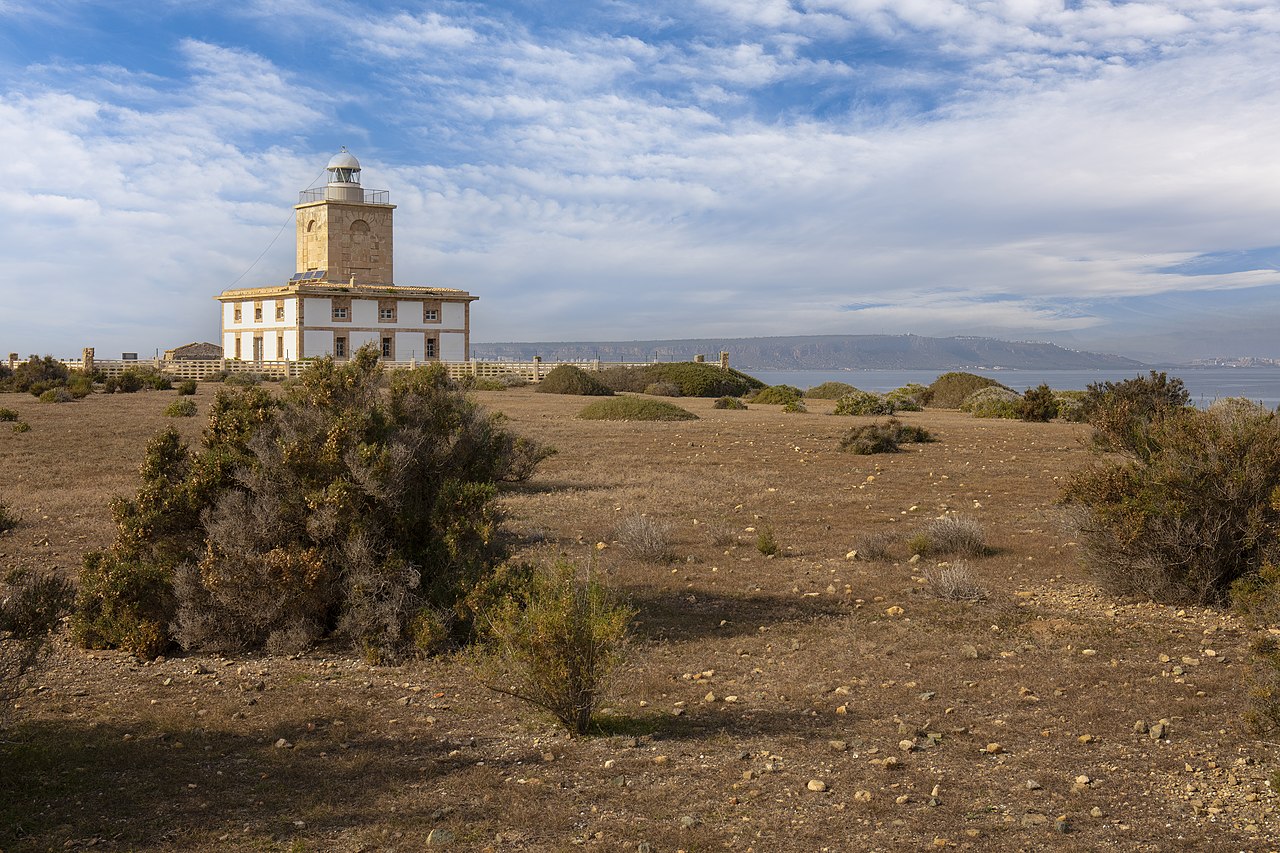
Tabarca Island Lighthouse
We end our tour of these seven magical corners of the province of Alicante in a place that is not in it, but on the high seas, about eight kilometers from Santa Pola. We talk to you about the Tabarca island, which was a transit site for the Greeks and Romans and which is still inhabited today.
It was during the reign of Carlos III when it was mostly populated and houses and common buildings were built. In it, apart from enjoying beautiful beaches and walking routes, you can visit some monuments. Among these, what remains of the old wall, built in ashlar. You can still see three of its doors, quite well preserved and in the Baroque style.
Conclusion those of San Rafael, La Trancada and San Miguel. To the same period and architectural taste belongs the church of San Pedro and San Pablo. For its part, Governor's House and San José tower they had administrative and military functions. As for the island's lighthouse, it was inaugurated in 1854 and responds to the neoclassical style. You will be surprised by its large dimensions. But they are due to the fact that it was also going to serve as a school for lighthouse keepers. Finally, the waters of the area make up the Tabarca Island Marine Reserve, with a valuable population of flora and fauna. You can get to know it better diving in the Llop Mari cave, where, according to legend, a horrible sea creature lives.
In conclusion, we have shown you seven magical corners of the province of Alicante. But we could advise you others just as beautiful. For example, the Guardamar dunes, where, in addition, there is an old Arab convent; the sources of the Algar, with its whimsical caves in the karstic rock, or the Cala Moraig, with its imposing Cueva de los Arcos. Visit all these places in Alicante, they will not disappoint you.